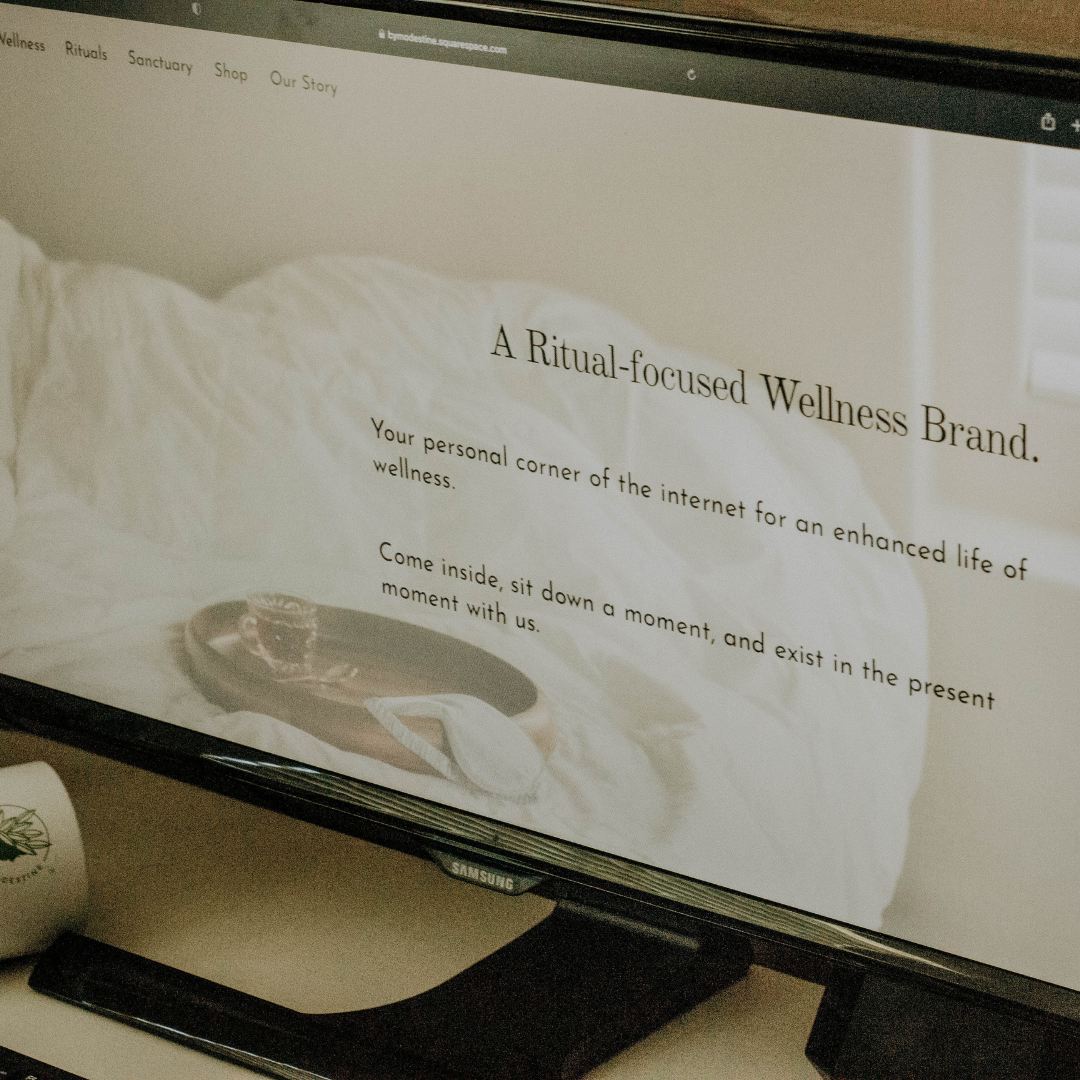The Importance of Website Load Speed for Better User Experience
🌕 Full Moon Notes:
This blog post is being released on the day of the Full Moon for this month. This year (2024) Raine & Rose is experimenting with aligning our operations and content with the moon phases! That means this blog post will focus on analyzing and optimizing the systems you currently have in place. We’ll provide insight on what this could look like through the lens of the outlined topic.
Are you losing sales because of this one detail?
Improve your website load speed today!
Your website serves as the virtual storefront, the first point of contact for potential customers. In this digital age, where attention spans are shrinking by the second, the speed at which your website loads can make or break a user's experience. For women-owned small businesses in the lifestyle industry, the online presence is crucial.
We live in a world where every click counts. So, ensuring that your website loads quickly is no longer just a nice-to-have—it's a necessity. Slow load times not only frustrate users but also impact your bottom line, leading to:
higher bounce rates,
decreased engagement, and
lost sales opportunities.
By optimizing your website's load speed, you not only enhance user experience but also bolster your brand's credibility and trustworthiness. This alignment between website and branding ensures that your marketing efforts are supported by a seamless online platform, driving higher engagement and conversions.
Let’s get into the web details:
Understanding the impact of website load speed on user experience
Strategies to optimize website load speed
Tools and resources for measuring and improving load speed
The Impact of Website Load Speed on User Experience
A slow-loading website can frustrate users and drive them away before they even have a chance to explore your offerings. Studies have shown that users expect a website to load within a few seconds, and any delay can lead to increased bounce rates. Research by Google indicates that as page load time goes from one second to ten seconds, the probability of a mobile site visitor bouncing increases by 123%. This statistic underscores the critical importance of optimizing load speed to retain visitors and keep them engaged with your brand.
Slow load times not only impact user experience but also have a detrimental effect on your search engine rankings. Search engines like Google prioritize fast-loading websites in their rankings, meaning that slow load times can negatively impact your visibility and organic traffic. With more users accessing websites on mobile devices than ever before, optimizing for mobile load speed is especially crucial. Google's mobile-first indexing further emphasizes the need for responsive, fast-loading websites to maintain a competitive edge in the digital marketplace.
Are you guilty of slow website speed?
Take the test.
Strategies to Optimize Website Load Speed
There are several tactics you can implement to improve your website's load speed. From optimizing images and minifying CSS and JavaScript to leveraging browser caching and utilizing content delivery networks (CDNs), each strategy plays a vital role in streamlining the loading process.
One effective strategy is to optimize image files to reduce their size without compromising quality. Compressing images and using modern image formats such as WebP can significantly reduce load times without sacrificing visual appeal. Additionally, implementing lazy loading techniques can defer the loading of non-essential content until it's needed, further speeding up initial page load times.
Minifying CSS and JavaScript files involves removing unnecessary characters and whitespace to reduce file size and improve load speed. This process streamlines the rendering of web pages, allowing browsers to parse and render code more efficiently. Furthermore, leveraging browser caching enables browsers to store static resources locally, reducing the need to re-download files on subsequent visits and improving load times for returning visitors.
Content delivery networks (CDNs) can also significantly enhance website performance by caching content on servers located closer to users. This reduces latency and minimizes the distance data needs to travel, resulting in faster load times and a smoother browsing experience. By strategically implementing these optimization techniques, you can ensure that your website delivers lightning-fast performance across all devices and platforms.
Tools and Resources for Measuring and Improving Load Speed
Numerous tools are available to help you analyze and enhance your website's load speed. From Google's PageSpeed Insights and GTmetrix to Pingdom and WebPageTest, these tools offer valuable insights into areas for improvement and track progress over time.
Google's PageSpeed Insights is a particularly valuable tool for identifying performance bottlenecks and receiving actionable recommendations for improvement. By analyzing factors such as server response times, render-blocking resources, and image optimization, PageSpeed Insights provides a comprehensive overview of your website's performance and suggests specific optimizations to enhance load speed.
GTmetrix offers similar functionality, allowing you to analyze page load times and receive detailed performance reports. The tool provides insights into various aspects of website performance, including page size, request counts, and waterfall analysis. By leveraging these insights, you can identify opportunities for optimization and prioritize improvements to maximize your website's speed and efficiency.
Pingdom and WebPageTest offer additional features for monitoring and optimizing load speed, including performance monitoring, historical data analysis, and advanced testing capabilities. These tools enable you to track performance trends over time, identify areas for improvement, and ensure that your website consistently delivers fast, reliable performance to users around the world.
What now?
It’s the Full Moon today, which is the perfect time for analyzing where you are. Being reflective and mindful. So, with that in mind, here’s what you’ll want to do:
✓ Take a web page speed test
✓ Start with downsizing your photo files (convert to WebP or a smaller PNG size file)
✓ Go over your essential CSS and JavaScript needs
On the next New Moon, we recommend starting to create new standards for your website edits that fit this speed priority.

